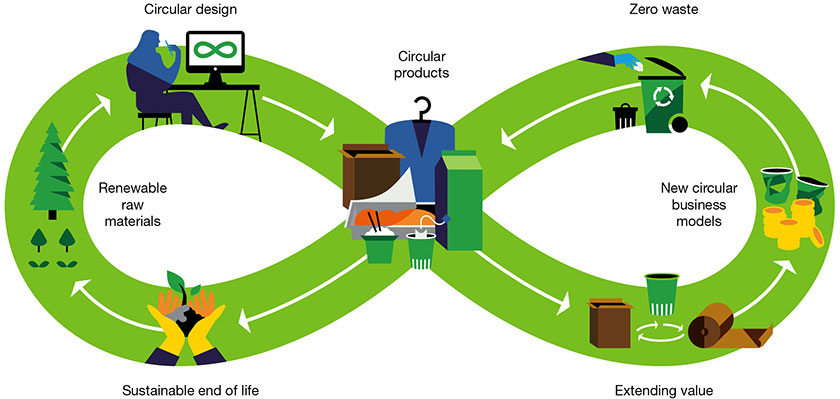We’re working together with our partners across the entire value chain to drive the circular bioeconomy with renewable fiber-based packaging. I call it the packaging eco-evolution.
In particular, two themes are critical in the push for packaging progress: recyclability and renewability. In order to make packaging more circular, recyclability must be advanced, while the renewability of raw materials leads to carbon neutrality.
It starts with recyclability
Today, brand owners, retailers and packaging converters across the globe are committed to having recyclable packaging portfolios by 2025, a deadline that is approaching fast. Right now, many have packaging formats that either aren’t fully recyclable or aren’t being recycled to the extent that they should be. I believe that this needs to change.
At Stora Enso, our job is to help brands and retailers transition to fully-recyclable packaging that meets the needs of consumers, legislators and the planet by 2025. And, it’s clear that fiber-based options are one of the best and most available ways to do that.
Paper and cardboard are the most recycled packaging materials in Europe with some 83% ending up being recycled. The collection and recycling rate for plastic packaging is much lower at just around 40%. Also, there’s already a solid collection, sorting and recycling infrastructure in place for fiber-based materials that makes them easier to recycle at greater scale.

It continues with renewability
Recyclability is important. But to transition towards a sustainable circular bioeconomy, the world needs materials that are both recyclable and renewable. Beyond recycling, the ultimate goal is packaging solutions that are carbon neutral and even carbon positive.
Fiber-based packaging has a low carbon footprint compared to other materials in many end-uses. Plastic, for example, is often notoriously fossil-heavy to produce and has those relatively low recycling rates we talked about earlier. And while glass and metal have relatively high recycling rates, they also have large climate footprints as a result of energy intense production processes.
I am certain that we can make a huge impact by replacing materials like these with renewable and recyclable fiber-based options that come from trees. As a company, we believe that a circular economy is only truly possible when the raw materials we use are too. And there’s nothing more circular than trees. The growth of trees is powered by the sun and rain. They’re naturally regenerative because they can be regrown again and again. And, they actually bind carbon dioxide from the atmosphere even after they’re made into products and recycled. With Stora Enso’s long history of sustainable forest management and manufacturing, our fiber-based solutions are produced sustainably, too.
While replacing non-renewable fossil-heavy packaging with fiber-based materials is fairly simple, one of key innovation areas are the structures needed to protect and preserve in the most demanding end uses: food and beverage packaging. In this case, a thin polymer layer is needed to protect the product and is recyclable. At Stora Enso, our goal is to ultimately replace plastic coatings with functional fiber-based alternatives, and I see every day how hard we’re working to make this a reality.
Leading the packaging eco-evolution
For us, the bottom line is that we need to replace fossil-heavy materials with renewable and recyclable options. And at Stora Enso, we believe that everything that’s made of fossil-based materials today can be made of a tree tomorrow. There are plenty of opportunities to improve packaging recyclability via fibre-based material, and from my standpoint, positive consumer behavior and existing recycling infrastructure fully support this. To create the most impact, recyclability must be coupled with renewability, and wood fibres offer a best-of-both-worlds solution to achieve this.
With our long history in fiber-based products, our experience in innovating new solutions from renewable materials, and our deep partnerships across the value chain, we are uniquely positioned to take the lead in this transformation. With you, our partners across the value chain, we will continue to drive the circular bioeconomy for all.






